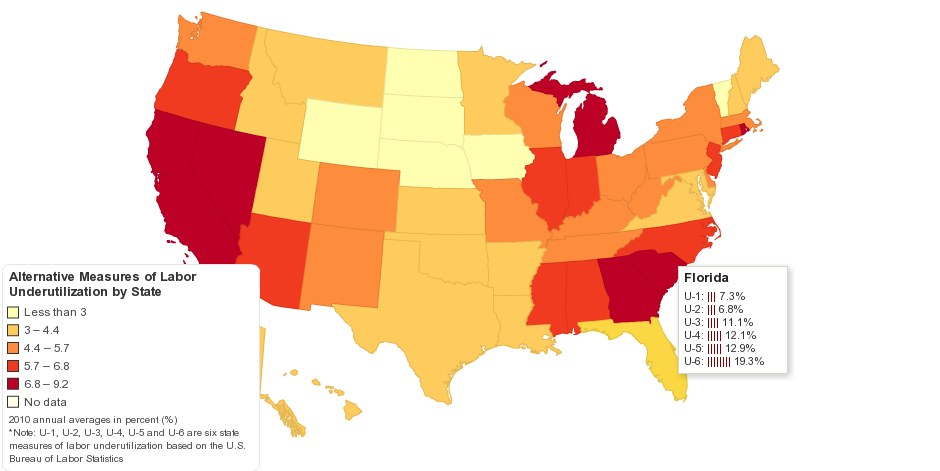This map shows six alternative measures of labor underutilization for United States by state.
United States, 2010 annual averages (percent):
- U-1: 5.7%
- U-2: 6.0%
- U-3: 9.6%
- U-4: 10.3%
- U-5: 11.1%
- U-6: 16.7%
How do the US Bureau of Labor Statistics measure the United States unemployment?
The US Bureau of Labor Statistics tracks six measures from the Current Population Survey (CPS) of households conducted by the Bureau of Census. These measures are known as U-1 through U-6, where U-3 corresponds to official unemployment rate.
Here's how those measures are defined:
- U-1, persons unemployed 15 weeks or longer, as a percent of the civilian labor force.
- U-2, job losers and persons who completed temporary jobs, as a percent of the civilian labor force.
- U-3, total unemployed, as a percent of the civilian labor force (the official unemployment rate).
- U-4, total unemployed plus discouraged workers, as a percent of the civilian labor force plus discouraged workers.
- U-5, total unemployed, plus discouraged workers, plus all other marginally attached workers, as a percent of the civilian labor force plus all marginally attached workers.
- U-6, total unemployed, plus all marginally attached workers, plus total employed part time for economic reasons, as a percent of the civilian labor force plus all marginally attached workers.
For more information about six alternative measures of labor underutilization for United States please follow reference link below.
15 years ago

